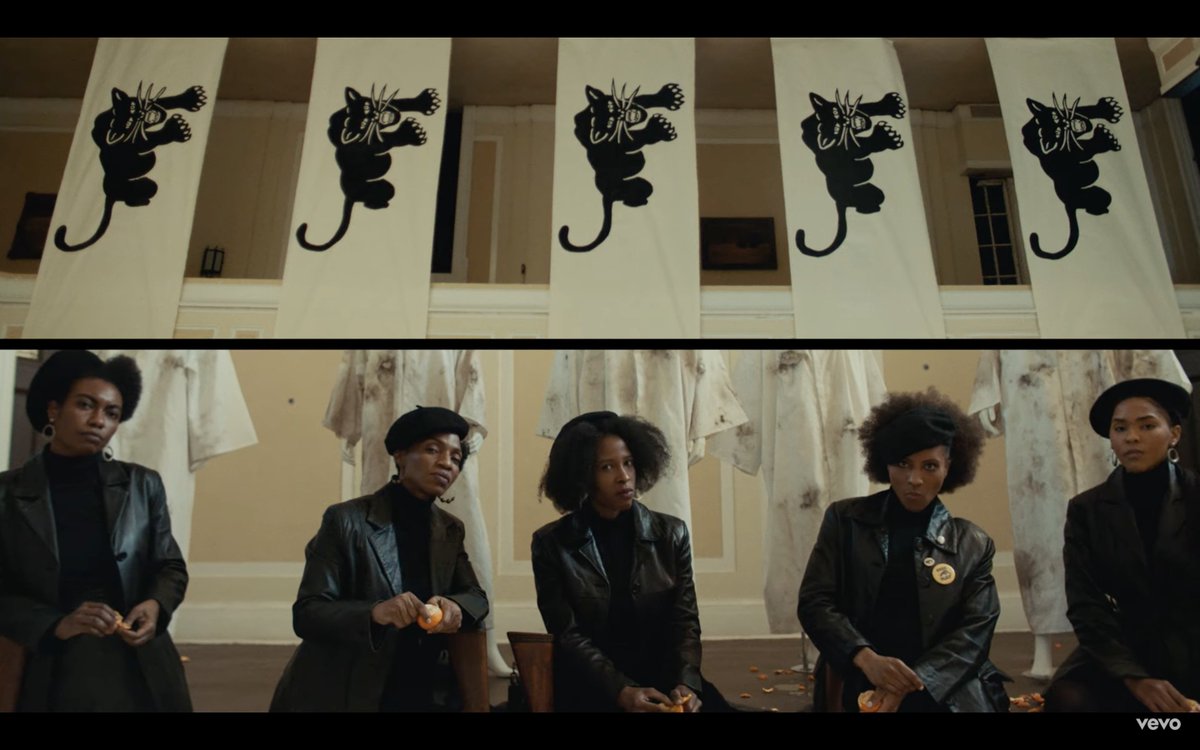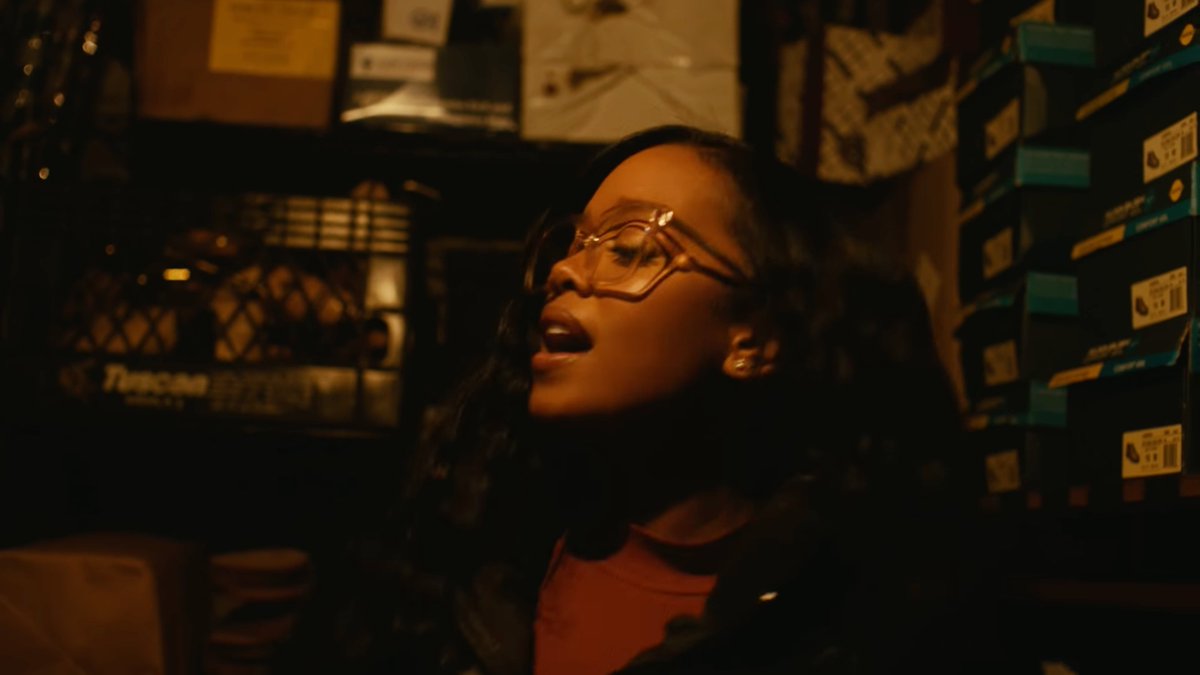Content warning: This article and the music video it analyzes includes the discussion of violence and police brutality.
Hitmaker and critically acclaimed musician Gabriella Sarmiento Wilson, known as H.E.R. (Having Everything Revealed) has released the music video to her Golden Globe and Critics Choice-nominated song “Fight For You,” which was made for the film “Judas and the Black Messiah.” The music video was directed by Child, which is clear in the interesting use of color and close but roving camera work.
The music video opens with H.E.R. delivering a monologue, as the scene is set using clips from the film and the opening title card “New York – 1971.” She speaks, “They killed one of us…again. More fuel to a raging fire you can’t pray away…I think back to what my father says, ‘Like strange fruit, it gets too bitter to taste.’”
The song “Strange Fruit” is a protest song sung by Billie Holiday. It was released due to the lynching of an innocent Black man and the inaction of Congress of the time. The song was originally a poem by Abel Meeropol, who set it to music and gave it to Lady Day. Like many activists of the time, Meeropol was a Communist, and like many Jewish people of the time, was targeted by the government. Meeropol’s Communist affiliation further alarmed New York lawmakers about the song, while the FBI continually targeted Holiday, especially in New York City.
H.E.R.’s use of the reference to “strange fruit” was very intentional, especially in a song made for a movie that focuses on Fred Hampton (who was monitored by the FBI and arguably killed by a raid in his apartment that was in conjunction with an FBI raid).
People are shown running through fiery streets, after an officer fired a gun at the camera. The time shifts to 50 years later.
H.E.R. grabs a bag from a man with a black panther tattooed on his wrist from the shoe repair shop featured in the opening clips. As she moves through the shop and streets, she catches glances. The music begins to kick up as she moves through the city, “All the smoke in the air/Feel the hate when they stare/All the pain that we bear/Oh, you better beware/Their guns don’t play fair.”
The video continues to cut to a man with a Black Panther beret, who is likely Fred Hampton. He is teaching children at a chalkboard, reading, “I am a revolutionary.” It also continues to cut to two white officers smirking down at a Black man on a stretcher, while there is also a white officer washing his hands and looking in the mirror, blood running into the basin.
H.E.R. hands off a bag to a group of dancing older women. One of the women takes the bag and moves to put it in a closet. While she does this, the video cuts back to a group of training Black Panther women. As the women shooting guns each turn to look at the camera, it becomes clear that the three women in the 60s are the three women dancing in the living room.
As the woman moves away from the closet, she leaves the new boots she was handed, but also the rifle from her youth. H.E.R. continues to walk through her neighborhood, talking with a friend and delivering shoes to a pastor who turns the shoe over to read, stamped in gold: “I am a revolutionary.” The video shows the shop owner who sent H.E.R. making the shoes.
Supported but light vocals move the story along, which H.E.R. sings in cuts to the closet of the shoe shop. The lyrics are a revolutionary call that mirror the actions being shown during the clips from the past, “Seems the only solution is a new еvolution/We can’t take it no more/No, it can’t be ignored/When they knock on your door, will you be ready for war?” She’s calling for “freedom” from oppressive systems, leaders and violence in the following verses, “I’ma always, always fight for you…”
The video then interjects with clips from the ‘60s, including an infamous 1969 shootout between police officers and Black Panther Party members, where the police building burned down a building in Chicago down with Party members atop it.
Then, police are shown barging into the shoe store. A man’s voice is heard, monologuing, “Everybody has a different definition of what revolutionary, but the fight is all the same, being Black in America — fighting for your liberation, being fearless in the face of oppression.” The clips rapidly flip between the past and present, showing the connection between the violence faced by Black people in America, especially those who protest, in the 1960s and 2020s. There is a frantic feeling as the music video uses the rapid inclusion of numerous clips of windows shattering, the three dancing women being held at gunpoint, footage from the movie and vintage videos.

Image via the official “Fight For You” music video
As a young Black man’s head is pressed to the ground with a barrel of the gun on his cheek, the story begins to flip between the opening scene. Is this the young man killed by the officer from the exposition or someone in the present? The music stops. It shows the young children learning and repeating the call, “I am a revolutionary!” The clips suddenly flip, showing the progression of time, as these young children hold the shoes with the revolutionary reminder.
A sudden gunshot is abruptly heard and the officer from the beginning is briefly seen again. It then cuts to the officer who was scrubbing the blood from his hands. The lighting is a cold blue in the bathroom, not the warmth seen in the previous clips surrounding H.E.R. He stares at himself in the mirror before looking into the conjoined room, where the back of two heads are seen staring at him. He looks stunned. “THE END,” comes on screen and it becomes clear to the viewer that there has been another killing.
The video pairs excellently with movie “Judas and the Black Messiah,” which follows William O’Neal (LaKeith Stanfield), who is forced to take a plea deal with the FBI to infiltrate the Illinois Black Panther Party, in order to report on Deputy Chairman Fred Hampton, a rising star and concern of the FBI. O’Neal is the duplicitous Judas and Hampton is the shining Black Messiah. Hampton wanted to empower the Black community through economic, defensive and ideological liberation.
One of Hampton’s most famous lines was “I am a revolutionary,” immortalized in the speech he delivered in 1969, “We’re not a racist organization because we understand that racism is an excuse used for capitalism, and we know that racism is a by-product of capitalism…When you leave here, leave here saying, the last words, before you go to bed tonight, say, ‘I am a revolutionary.’ Make that the last words in case you don’t wake up…Say that, ‘I am a revolutionary.’ I am a revolutionary!”
The song “Fight For You” uses free vocals and brassy instrumentals, with the music video serving as a reflected statement of loyalty and community. It could be considered needlessly violent to include such depictions of brutality in a music video, but it works in collaboration with the movie.
Furthermore, it tries to contrast it with the warmth and strength that is also present. Community is on display in the movie, while the message of being loyal and fighting for someone is murkier — the story begins with a promise of betrayal, after all. Both the video and the movie tell the story of Black oppression and resistance in America, as the video makes it clear that Black people seeking revolution has continually been met with violence and murder.
Feature image courtesy of RCA Records/the official motion picture music video











